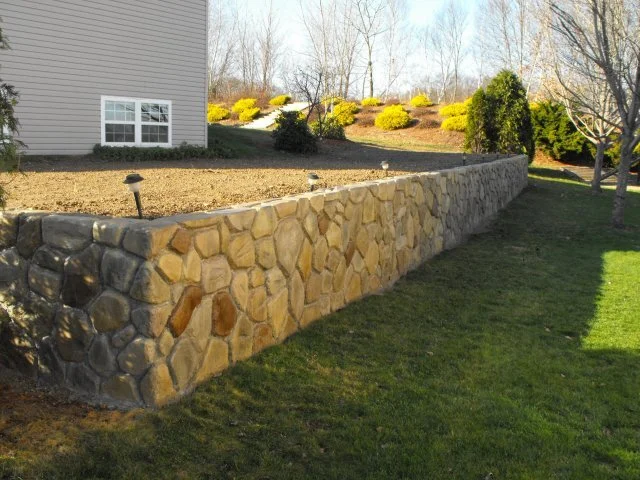How to Avoid Retaining Wall Failures
In the aftermath of Superstorm Sandy our thoughts go to those who were affected. With the destructive power of nature still in our minds, we also want to take a closer look on the durability of hardscape features. Many of you have probably passed an otherwise beautiful residential development, but noticed the crumbling or tilting of a retaining wall. How can that happen? And even more important: How can you avoid the failure of important hardscape structures?
Generally retaining walls provide lateral support for vertical slopes of soil, which would otherwise collapse. Retaining walls are used for landscaping purposes, such as changing the topography of a yard. Since there is no yard without a slope, retaining walls are used often to level of terrain for a swimming pool, a patio, terrace or other landscaping feature.
To build a durable wall, it takes some planning and designing. Factors that should be considered are purpose of the wall, site placement, drainage, foundation, construction materials and building code issues. If the general engineering principals have not been applied, failure will occur, the wall will crumble, crack, puddles will develop around the top or the base of the wall, and the wall will set excessively or even sink.
Building Codes
Building Codes are made for a reason! Retaining walls should always be considered as load bearing construction not as an aesthetic feature, although new materials like StoneMakers concrete will allow us to design aesthetic and durable constructions. When calculating the effect of the earth pressure one also has to consider the contribution of water – plus worst-case scenarios, such as long lasting rainstorms or melting snow. All Albert Group Landscaping construction comply with the applicable building codes.
Foundation
The foundation is one of the most important parts of you wall. The footing and foundation system ensures that the retaining wall can resist the imposed lateral forces. It will also prevent the wall from sinking or settling excessively. Well designed and built walls utilize steel reinforcement bars or other methods to tie the wall to the foundation.
Drainage
Most retaining walls fails because rising groundwater or soil-moisture builds up too much pressure for the wall. When the imposed forces of soil and groundwater exceed the resisting forces of the retaining wall, failure occurs. Therefore all retaining walls should be constructed in a way that provides drainage for all water that collects behind the wall. Possibilities are a gravel drainage blanket and/or pipe behind the wall.
As you can see, proper design and engineering are essential to build a functional and long lasting retaining wall. Feel free to contact Jamie Snyder if you have any questions. Albert Group Landscaping also can provide you with a free estimate for your next landscaping project.
About the Author
Our company started with a simple idea: Treat people the way we’d like to be treated. Provide choices, be up-front with pricing, and give them quality features in their landscape. More than 15 years and hundreds of satisfied customers later, we continue to make good on this commitment. Pool technology has changed tremendously, opening up the possibilities for what type of pool you can have and the stonework surrounds—and all the elements that can go along with it. This has made installing great poolscapes even more enjoyable for our crew.

